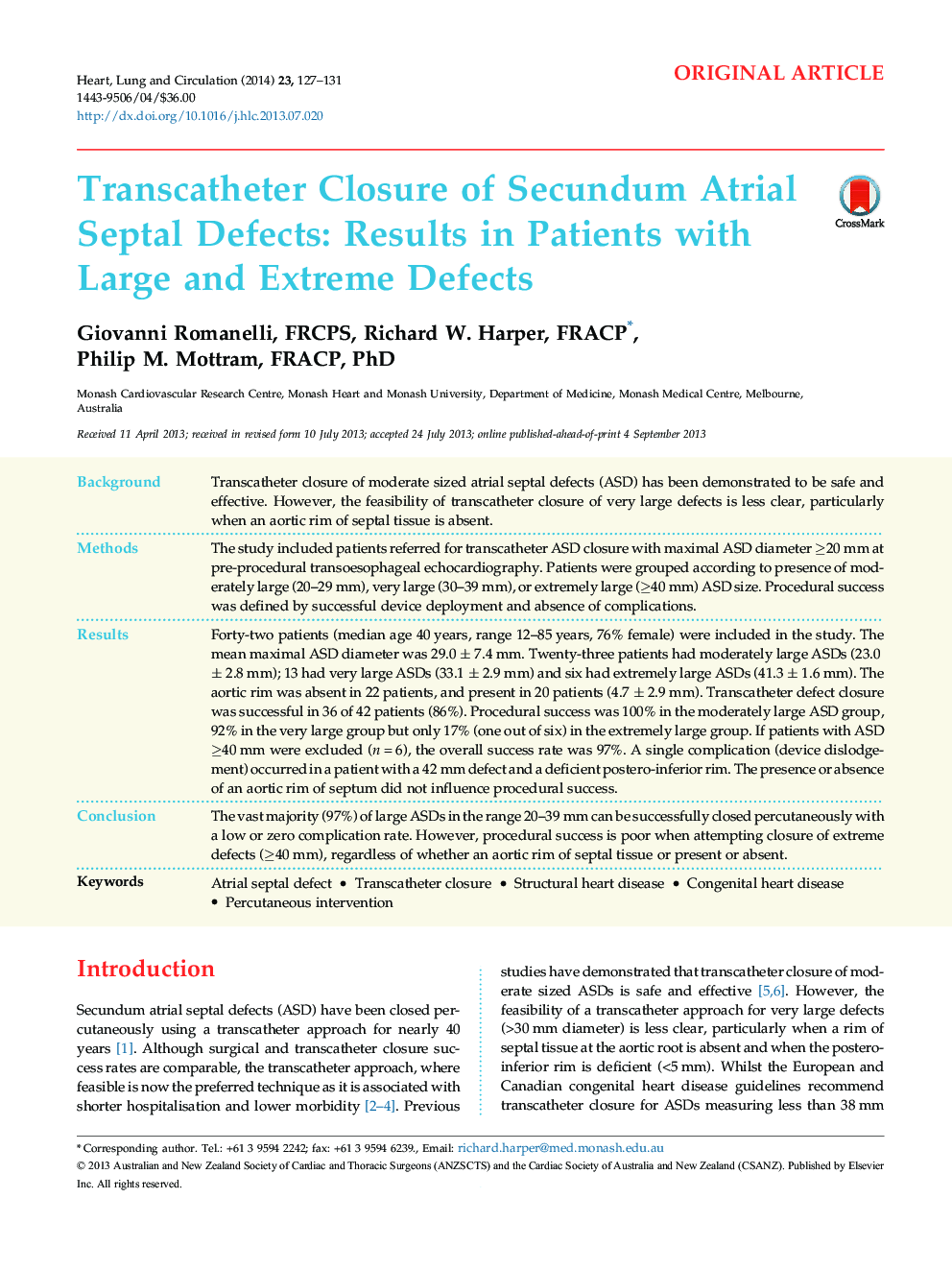| کد مقاله | کد نشریه | سال انتشار | مقاله انگلیسی | نسخه تمام متن |
|---|---|---|---|---|
| 2918888 | 1175700 | 2014 | 5 صفحه PDF | دانلود رایگان |

BackgroundTranscatheter closure of moderate sized atrial septal defects (ASD) has been demonstrated to be safe and effective. However, the feasibility of transcatheter closure of very large defects is less clear, particularly when an aortic rim of septal tissue is absent.MethodsThe study included patients referred for transcatheter ASD closure with maximal ASD diameter ≥20 mm at pre-procedural transoesophageal echocardiography. Patients were grouped according to presence of moderately large (20–29 mm), very large (30–39 mm), or extremely large (≥40 mm) ASD size. Procedural success was defined by successful device deployment and absence of complications.ResultsForty-two patients (median age 40 years, range 12–85 years, 76% female) were included in the study. The mean maximal ASD diameter was 29.0 ± 7.4 mm. Twenty-three patients had moderately large ASDs (23.0 ± 2.8 mm); 13 had very large ASDs (33.1 ± 2.9 mm) and six had extremely large ASDs (41.3 ± 1.6 mm). The aortic rim was absent in 22 patients, and present in 20 patients (4.7 ± 2.9 mm). Transcatheter defect closure was successful in 36 of 42 patients (86%). Procedural success was 100% in the moderately large ASD group, 92% in the very large group but only 17% (one out of six) in the extremely large group. If patients with ASD ≥40 mm were excluded (n = 6), the overall success rate was 97%. A single complication (device dislodgement) occurred in a patient with a 42 mm defect and a deficient postero-inferior rim. The presence or absence of an aortic rim of septum did not influence procedural success.ConclusionThe vast majority (97%) of large ASDs in the range 20–39 mm can be successfully closed percutaneously with a low or zero complication rate. However, procedural success is poor when attempting closure of extreme defects (≥40 mm), regardless of whether an aortic rim of septal tissue or present or absent.
Journal: Heart, Lung and Circulation - Volume 23, Issue 2, February 2014, Pages 127–131